Landforms of Glaciation
by Devender
0 2353
There are only 2 major ice caps present in the world today that are - Antarctica & Greenland. However, there are many highlands above the snowline surviving in the world.
Landforms of Glaciation
- The peaks of the loftiest mountains projecting above the ice surface are known as Nunataks
- The ice from ice caps escapes in all directions as glaciers
- When this ice reaches the bottom of the sea, it floats as ice shelves over polar waters
- When these shelves break into individual blocks, they are called icebergs
- Only 1/9th of the iceberg's mass is visible above the surface when the iceberg floats oversea
- This refreezing process repeats until it forms a hard, granular substance known as neve or firn
- Glaciers
- The rate of movement is greatest in the middle where there is little obstruction
- The sides & bottom are held back by the frictions due to valley sides & valley floors
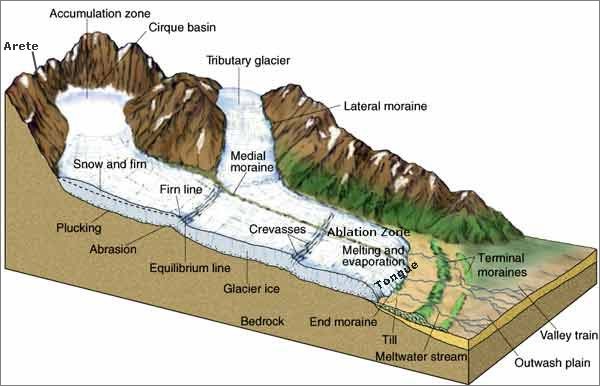
They diminish in size when reaching warm waters & eventually melted, dropping the rock debris that was frozen inside them on the sea bed. The Permanent snowfield is sustained by heavy snowfall in winters & ineffective snow melting & evaporation in summers as part of snow that melts during the day is refrozen during the night.
Neve of the upland snowfield is drawn towards the valley below due to gravitational force that marks the beginning of the flow of glacier (river of ice).
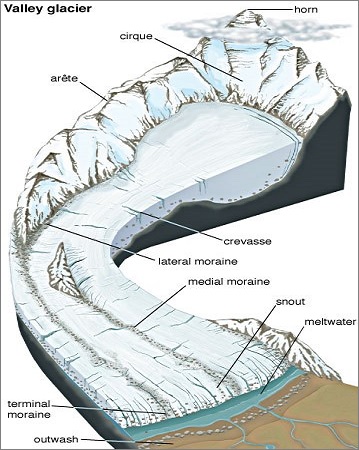
They normally assume the shape of a tongue, broadest at the source & becoming narrower downhill. Glaciers are not liquid but still, moves gradually under the continual pressure from the snow accumulated above.
If a row of stakes is planted across a glacier in a straight line, they will eventually take a curved shape down the valley, showing that the glacier moves faster at the center than at the sides.
Types of Glaciers
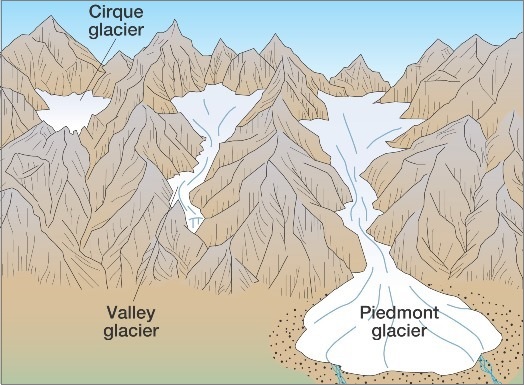
There are 3 types of glaciers that are:
1 Piedmont Glacier
These are found at the foot of the mountain ranges, several glaciers may converge to form an extensive ice mass.
2 Cirque Glacier
These are formed in a cirque, bowl-shaped depression on the side of or near mountains. Snow and ice accumulation in corries often occurs as the result of avalanching from higher surrounding slopes.
3 Valley Glacier
The streams of flowing ice which are confined within steep-walled valleys, often following the course of an ancient river valley.

Share:

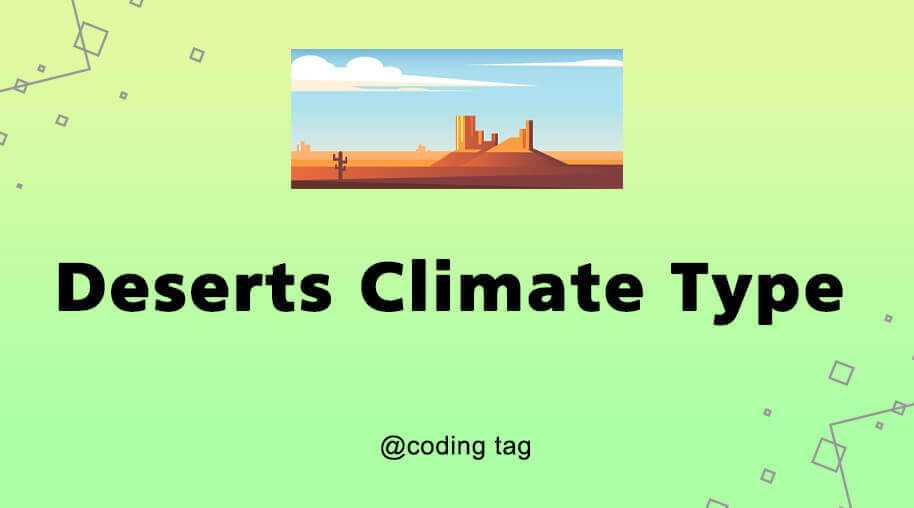
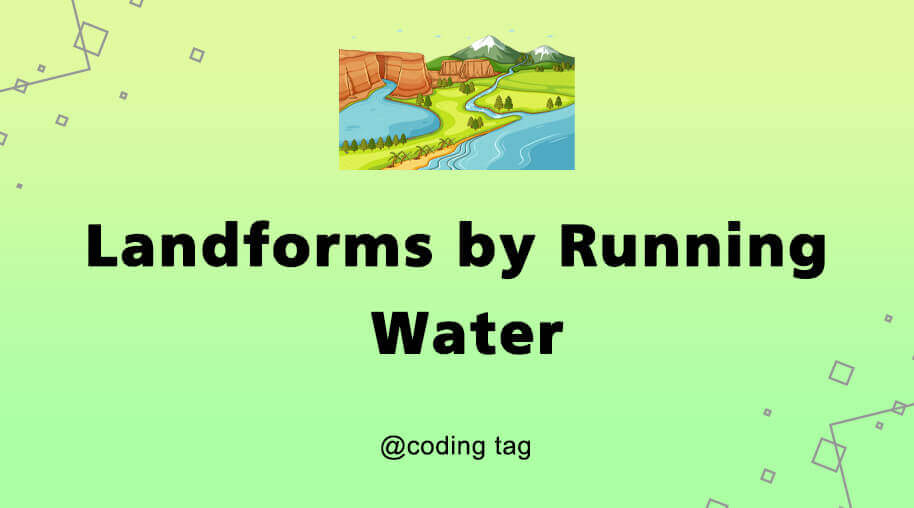
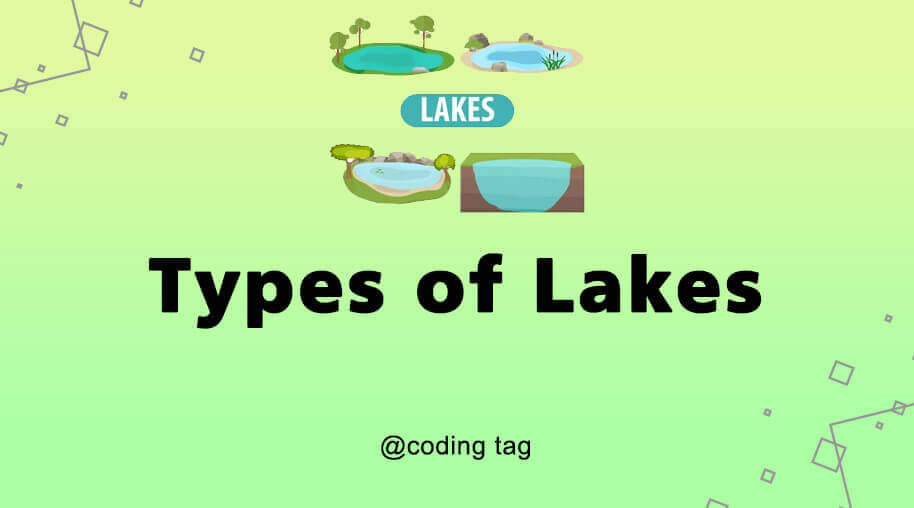



Comments
Waiting for your comments